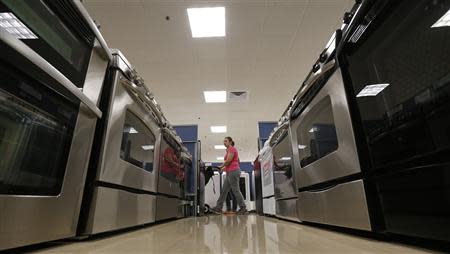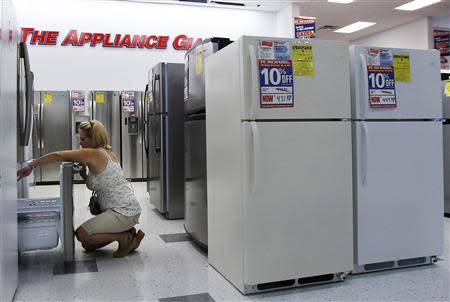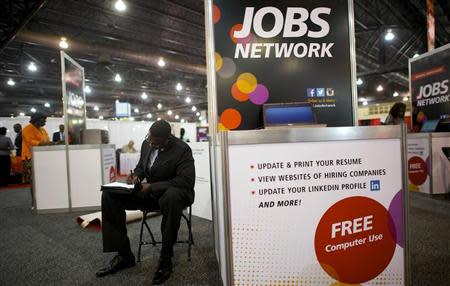U.S. core capital goods order up, but worries linger
By Lucia Mutikani WASHINGTON (Reuters) - Orders for long-lasting U.S. manufactured goods excluding transportation and a gauge of business spending unexpectedly rose in January, offering hopeful signs for factory activity which has slowed in recent months. Still, the data on Thursday was not enough to alter views that economic growth hit a soft patch early in the first quarter, with key measures like shipments declining last month. "Upside surprises are welcome news. Underlying strength in the economy, however, remains less than stellar at the start of the year," said Diane Swonk, chief economist at Mesirow Financial in Chicago. The Commerce Department said durable goods orders excluding transportation rose 1.1 percent, the largest increase since May, after falling 1.9 percent in December. Durable goods are items from toasters to aircraft meant to last three years or more. The increase last month, which beat economists' expectations for a 0.3 percent fall, reflected a surge in orders for computers and electronic products, fabricated metal products and defense capital goods. There were, however, declines in orders for machinery, primary metals, electrical equipment, appliances and components, and transportation equipment. Data such as industrial production and regional factory surveys have suggested a loss of momentum in manufacturing and the broader economy in recent months. Part of the slowdown reflects unusually cold weather that has disrupted activity. Manufacturing is also cooling as businesses work through a massive stock of unsold goods that was accumulated in the second half of 2013. As a result, they are placing fewer orders with manufacturers, holding back factory production. In January, shipments of durable goods fell for a second straight month and inventories rose 0.3 percent after increasing 0.9 percent in December. "What we're not seeing in terms of manufacturing production is a consistent steady demand for products leading to a cumulative growth rate in manufacturing," said Lance Roberts, chief economist at STA Wealth Management in Houston. CORE CAPITAL GOODS ORDERS UP Non-defense capital goods orders excluding aircraft, a closely watched proxy for business spending plans, rose 1.7 percent after dropping 1.8 percent in December. Economists had expected orders for these so-called core capital goods to slip 0.5 percent last month. While the increase in core capital goods orders last month was a positive development, shipments of these goods fell 0.8 percent, indicating weakness in activity in the near-term. Shipments of core capital goods are used to calculate equipment spending in the government's measure of gross domestic product. They had increased 0.3 percent in December. "They are another indicator that growth in the economy has gotten off to a slow start this year," said Tim Quinlan, an economist at Wells Fargo Securities in Charlotte, North Carolina. U.S. financial markets were little moved by the data, with investors keeping an eye on the unrest in Ukraine. A separate report from the Labor Department showed initial claims for state unemployment benefits increased 14,000 to a seasonally adjusted 348,000. Economists had expected first-time applications to fall to 335,000. While last week's increase pushed them to the upper end of their range so far this year, it does not signal labor market weakness as claims tend to be volatile around federal holidays. The four-week moving average for new claims, considered a better measure of underlying labor market conditions as it irons out week-to-week volatility, was unchanged at 338,250. "Our sense is that there has been no change in the underlying pace of layoffs," said Guy Berger, an economist at RBS in Stamford, Connecticut. The unusually cold winter has clouded the labor market picture, with job growth braking sharply in December and recovering only marginally in January. A third month of weak hiring is expected after snowstorms slammed the densely populated regions of the country during the survey week for February nonfarm payrolls. "Still, despite the steadiness in the claims data, we expect that next week's employment report may show an impact from adverse weather," said Berger. (Reporting by Lucia Mutikani; Editing by Andrea Ricci and Meredith Mazzilli)



